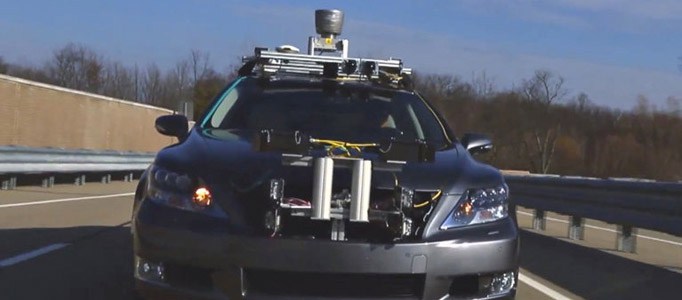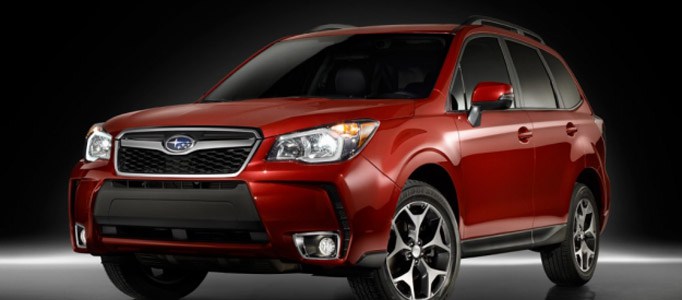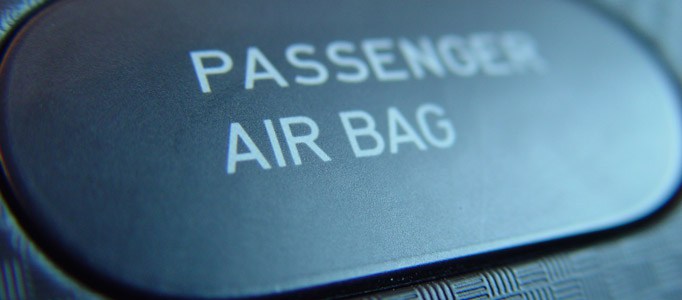Consumer Electronics Show at Las Vegas was expected to spawn a few important and long-awaited consumer gadgets. Instead, it all turned out to be dominated by car technologies. At least from what we could see on the social networks.
The stats confirm this surprising trend. Crimson Hexagon, the developer behind the state-of-the-art social media analysis platform ForSight is sifting through 300 million tweets and Facebook statuses daily. During the 4 days of CES, Crimson Hexagon identified more than 100,000 conversations related to the CES. The car technology initiated 29% of the conversations with mobile technologies and gaming scoring only 12% and 21% respectively. What were the most talked-about car safety technologies?
Major Distraction
This year’s CES event was rather contradictory. It’s almost as if the exhibitors had split into two camps. With so many in-car entertainment innovations being presented at this year’s CES, the “safety-freak” camp tries to remind us that any in-car entertainment gadget is potentially a dangerous distraction for the driver.
The in-car entertainment is a multi-billion industry and it won’t go away just because some people think it’s dangerous. The only thing that can be done about it is making the operation more intuitive and less distractive.
That’s what QNX Software Systems is trying to achieve. It is owned by Research in Motion and designed to provide car manufacturers with a pre-integrated software suite that they can build upon.
It’s based on Linux, which makes it pretty easy for developers to create bespoke apps without the need to develop everything from scratch. In order to showcase the possibilities of the QNX, they’ve revealed an advanced GPS system that integrates into the car’s dashboard so that the driver doesn’t have to take eyes off the road.
Just Ask for the Directions
With the voice recognition software so popular, you’d expect that operating an ultra-modern sat-nav would be simply a matter of asking it for the directions. Surprisingly, it’s not that simple. Yes, many sat-nav models can handle voice commands but the problem is that you have to memorise the specific commands for the sat-nav to respond properly. The more gadgets you have, the more commands you have to remember. This can probably be as distractive as tampering with the old-style sat-nav because you suddenly lose concentration.
The answer is obvious – Siri! The clever voice-recognition software developed for the iPhone can take random free-form voice commands and it’s pretty accurate with the answers. Hyundai has recognised an opportunity here and is working to develop an in-car infotainment system based on Siri.
Driverless Cars vs. Robotic Co-pilots
Although an increasing number of drivers treat their cars practically – as means of getting about and around (and that’s essentially what a car is, isn’t it?) – there will always be people who take a great enjoyment in driving.
I don’t know of a particular study or survey to prove this but I’m sure that the majority of the people on the road actually enjoy driving. The need of being in control and the need for a thrill is something that has been an important part of the Homo Sapiens since pre-historic times. That’s simply how our brain works. Now, are we ready to change our attitude and our primal instinct in favour of presumably easier and safer driving?
Toyota and Lexus thinks we’re not. Hence they’re not playing with the idea of a driverless car instead offering a superb package designed to assist the driver in dangerous situations.
Mark Templin, Toyota Group Vice President has been quoted saying: “For Toyota and Lexus, an autonomous vehicle does not translate to a driverless vehicle, but rather a car equipped with an intelligent, always-attentive co-pilot whose skills contribute to safer driving.”
Laser-targeted Driving
The experimental Lexus LS 600h Hybrid car has been equipped with a roof-top laser assembly called LIDAR. It’s got a range of 70 feet and it can detect potential danger. In addition to the “old-school” lane departure sensors, the car is equipped with 3 hi-res cameras and a magic GPS receiver that is actually capable of understanding which way the car is pointing.
This hasn’t been possible previously, so the Lexus’ co-pilot is more flexible than earlier attempts of creating an intelligent driver’s assistant.

Highway Institute has estimated that driver fatigue and dozing off causes 1,500 deaths each year. The Sleep Research Centre indicates that driver fatigue causes up to 20% of all accidents. This is too serious to ignore.
A car like Lexus LS 600h would take over if the driver fell asleep. This is a really useful invention but it will take a couple of years for the technology to go mainstream. Primarily because of the size of equipment. The lasers would have to be integrated in side-view mirrors or somewhere else to free up the roof.
300,000 Miles Without an Accident
The driverless car field has been dominated by Google so far, however, this year Audi showed that they can do as good. In the meantime the Google’s car has been made legal in the state of Nevada and it has completed 300,000 miles accident-free proving that driverless cars are not such a crazy idea after all.
Audi has responded with a car that will set you down, find a parking space park itself and then when you’re done, you’ll be able to call it from your smartphone ,and the car will find you and pick you up. That sounds really convenient. Nevertheless, Audi notes that there’s a good 10 years before these cars might go on sale. Why? Cost is the main issue. The LIDAR that I mentioned earlier (Google’s car is using a similar system) costs around £45,000 while the complete driverless system costs nearly £100,000.
It was Inevitable
It was just a matter of time before the people would start connecting their cars to the internet. It’s not just another pie-in-the-sky moment. Subaru has actually scheduled its first internet car for a 2014 launch. It will be the new Forester to carry the patented StarLink technology into masses.
Although the main reason for the StarLink to appear on the mainstream cars seems to be facilitating internet radio, the new infotainment system will also integrate safety, smart braking and even access to social networks.
Does that mean you’ll have to tweet in order to adjust your braking power? Maybe! I’m not sure what’s the use of social media inside a car – unless you want to tweet #nowplaying with every song you listen on the radio or share your current location with your favourite stalker.

On a more serious note, the StarLink also incorporates a set of cameras as part of a collision prevention system. The car can brake for you if it predicts a collision and it can also avert heavy acceleration (or indeed an erroneous acceleration) when it’s not safe to gain speed because of an obstacle that the driver hasn’t noticed.
Garmin Takes it to Another Level
A similar system was presented by Garmin. Called the K2 Glass Cockpit, it’s the ultimate car infotainment system with a dedicated wireless service integrated. In normal circumstances the car will connect to the Garmin’s data centre via a smartphone (I’d like to see your face when you receive your next bill with the overspent data plan) or via a dedicated modem, if the manufacturer has opted for it.
You can get your email, access your social media accounts, get valuable information about the traffic ahead, fuel prices… but… the Glass Cockpit (just like the StarLink) has no buttons – the interface is based on a sensitive touch-screen. How will this work from the perspective of safety? Here’s how – the touch screen responds only when the car is stationary. When you’re driving, you can use some voice commands but there will be no tampering with the screen!
These were the most talked-about car safety technologies in this year’s Consumer Electronics Show. What do you think we might talk about same time next year? Is there anything that the manufacturers haven’t still thought about? Please add your comments below!






 Facebook
Facebook Twitter
Twitter Instagram
Instagram LinkedIn
LinkedIn Youtube
Youtube